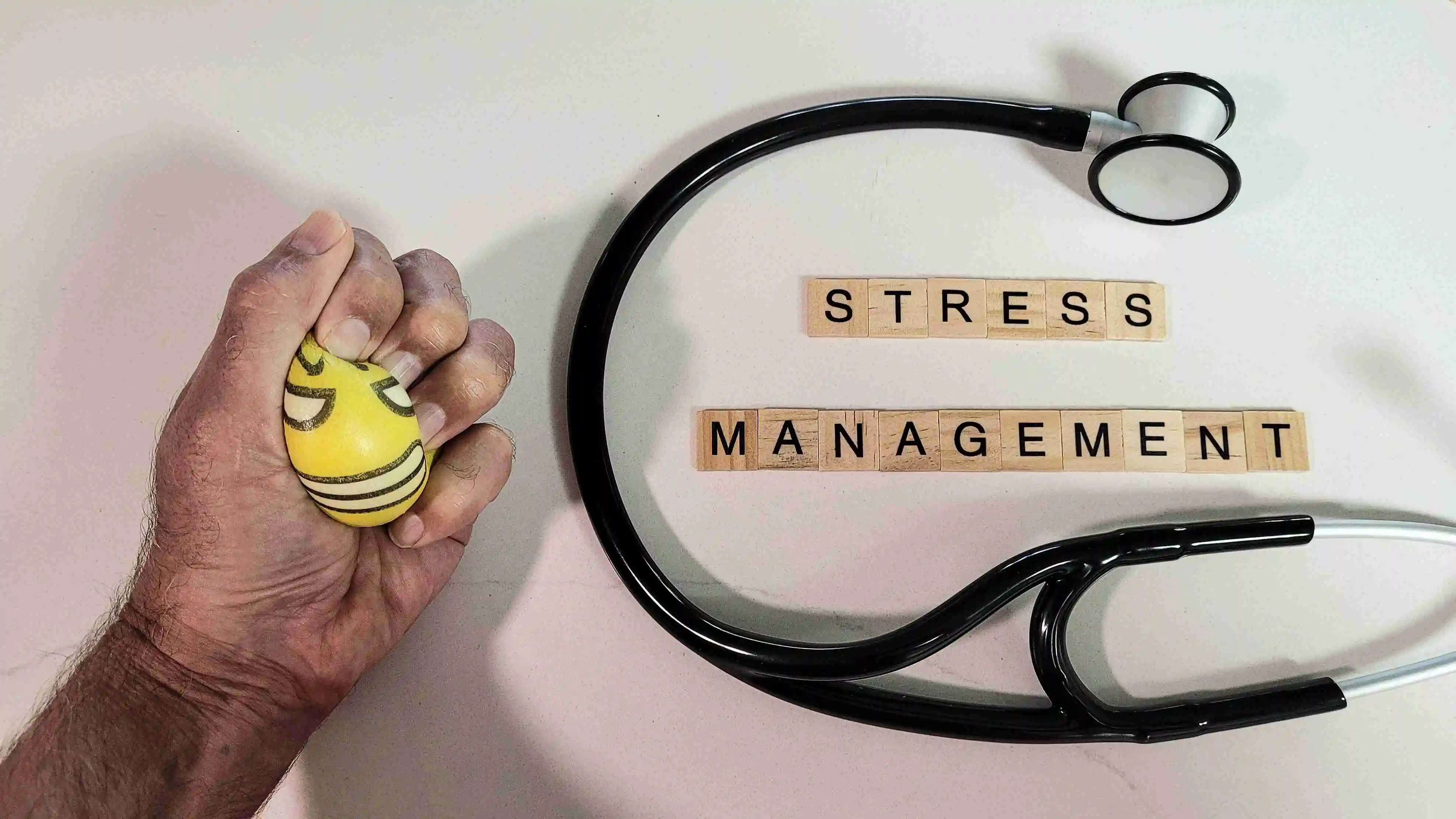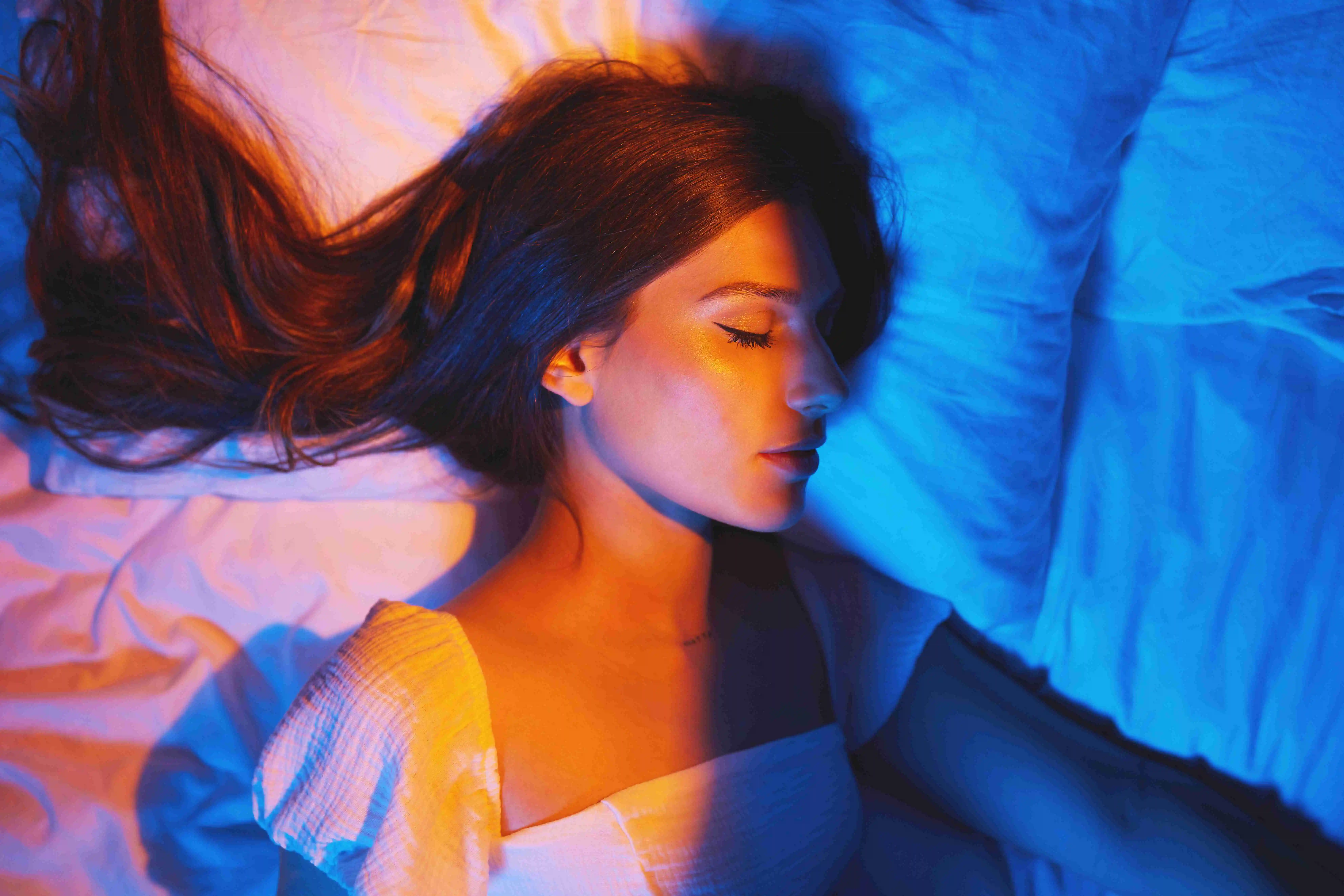Understanding the nature and science behind dreams can shed light on the complex relationship between our subconscious minds and the sleep cycle.
In this comprehensive article, we delve into the intriguing world of vivid dreams, exploring their definition, neuroscience, influencing factors, techniques for enhancing dream experiences, and the potential benefits and drawbacks of vivid dreaming.
What are vivid dreams?

Vivid dreams are characterized by the ability to recollect dream content upon waking. These dreams often occur during the rapid eye movement (REM) stage of sleep, a period associated with heightened brain activity and vivid, memorable dream experiences.
Vivid dreams can feature detailed narratives, intense emotions, and lifelike sensory perceptions, making them highly immersive and impactful. Stress, trauma, mental health issues, sleep disruptions, medications, and sleep disorders are just a few of the variables that may impact the content of vivid dreams.
While vivid dreams are a normal and integral part of the sleep cycle, they can vary widely in their emotional tone and content, ranging from pleasant and creative to distressing and nightmarish. These dream experiences are rich and detailed because brain regions, neurotransmitters, and mental states influence the vividness of dreams and our capacity to recall them when we wake up.
Causes of Vivid Dreams
- Disrupted Sleep: Disruptions to the sleep cycle, such as insomnia, narcolepsy, or changes in sleep schedules, can lead to an increased likelihood of experiencing vivid dreams. These disruptions may result in an imbalance in the sleep stages, particularly during REM sleep, when vivid dreams are most likely to occur.
- Stress and Anxiety: High levels of stress and anxiety can trigger intense dreams and nightmares. Stressful life events, such as trauma, significant life changes, or ongoing worries, can contribute to the occurrence of vivid and emotionally charged dreams. Additionally, anxiety disorders are associated with an increased risk of experiencing disturbing and intense nightmares.
- Medications: Various medications, including antidepressants, beta-blockers, certain blood pressure medications, and drugs used to treat Parkinson's disease or aid in smoking cessation, have been reported to contribute to vivid dreams. These medications can affect neurotransmitters in the brain, leading to changes in sleep patterns and dream experiences.
- Illness and Physical Health: Certain physical illnesses, such as heart disease and cancer, have been associated with vivid dreams. Additionally, disruptions in the body's hormone levels, sleep patterns, and emotional states due to physical health conditions can contribute to the occurrence of vivid dreams, as well as arthritis and joint pain.
- Pregnancy: Early pregnancy can lead to changes in hormone levels, sleep patterns, and emotions, often resulting in heightened dream activity. Many pregnant women report experiencing vivid dreams, especially during the early stages of pregnancy.
- Sensory Stimuli Near Bedtime: External sensory stimuli, such as exposure to intense light, noise, or temperature changes, can influence the content and intensity of dreams close to bedtime. These stimuli can impact the brain's activity during sleep and contribute to the occurrence of vivid dreams.
Impact of Vivid Dreams on Sleep Quality

Vivid dreams, characterized by particularly realistic or clear dream content, are part of the normal spectrum of dreaming experiences. While most dreams don't harm sleep, their vividness and content can vary from person to person, and their effects on sleep quality can be diverse.
Learn More: How Dreams Affect Sleep Quality.
Benefits of Vivid Dreams
Engaging with vivid dreams can offer a wealth of benefits, both personal and professional. Here are some of the key advantages of embracing the power of vivid dreaming:
- Enhanced Creativity and Problem-Solving: Vivid dreams can unlock the creative potential of the subconscious mind, leading to innovative ideas, unique solutions to problems, and a renewed sense of inspiration.
- Improved Emotional Regulation: The intense emotional experiences encountered in vivid dreams can help individuals process and better understand their feelings, leading to improved emotional intelligence and self-awareness.
- Increased Self-Discovery: Vivid dreams can provide a window into the subconscious, revealing insights about our deepest desires, fears, and motivations, which can aid in personal growth and self-discovery.
- Enhanced Memory and Learning: Vivid dreams can improve memory consolidation and facilitate the processing of new information, leading to enhanced learning and cognitive performance.
- Therapeutic Benefits: Individuals can process and overcome past traumas or unresolved emotional issues in therapeutic settings by using vivid dreams, particularly those involving nightmares or traumatic experiences.
Drawbacks of Vivid Dreams
There are potential drawbacks or challenges to vivid dreaming. Some of these drawbacks include:
- Interrupted Sleep Cycles: Vivid dreams, particularly those that are emotionally disturbing, can disrupt the normal sleep cycle, particularly during the REM (rapid eye movement) stage. This can lead to fragmented sleep and a decrease in the overall quality of rest, potentially resulting in feelings of grogginess and exhaustion upon waking.
- Difficulty Falling Asleep: The emotional intensity of vivid dreams can make it challenging for individuals to fall asleep, especially if they are experiencing anxiety or fear related to the content of their dreams. This difficulty in initiating sleep can further contribute to disruptions in the sleep cycle and overall sleep quality.
- Nightmares and Anxiety: Negative vivid dreams, such as nightmares, can induce feelings of anxiety and distress, leading to an increased risk of sleep disturbances. The emotional impact of these dreams can create a sense of unease and anxiety, potentially affecting the individual's overall well-being and sleep patterns.
- Lingering Emotional Distress: Vivid dreams, especially those with distressing content, can leave individuals with lingering emotional distress after waking. The vividness and realism of such dreams can make it challenging for individuals to shake off the emotional impact, potentially affecting their mood and mental well-being during waking hours.
- Fatigue and Daytime Sleepiness: The emotional and psychological burden of vivid dreams, especially if they are negative or unsettling, can lead to daytime sleepiness and fatigue. The disruptive nature of these dreams can affect the overall quality of rest, leaving individuals feeling worn out and less alert during the day, impacting their productivity and daily functioning.
Types of Vivid Dreams

Different vivid dreams have different characteristics and implications. Some common types of vivid dreams are as follows:
- Lucid Dreams: Lucid Dreams are dreams in which the dreamer is aware that they are dreaming and can exert some level of control over the dream environment and events.
- Prophetic Dreams: Dreams that seem to foretell or predict future events, often symbolically or metaphorically.
- Recurring Dreams: Dreams that repeatedly occur, often with similar themes or settings, may be indicative of unresolved emotional or psychological issues.
- Nightmares: Vivid dreams with a strong negative emotional component, such as fear, anxiety, or terror, which can be distressing or even traumatic.
- Hypnagogic Hallucinations: Vivid, dreamlike experiences that occur during the transition between wakefulness and sleep, often involving sensory distortions or hallucinations.
Techniques for Inducing Vivid Dreams
If you're interested in experiencing more vivid dreams, there are several techniques you can explore to enhance your dream life. Here are some steps you may want to follow:
Maintain a Dream Journal
Regularly recording your dreams in a journal can help you become more aware of your dream experiences and identify patterns or recurring themes. This increased awareness can, in turn, lead to more vivid dreams.
Reality Checks
Reality testing, or reality checking, is a form of mental training that involves questioning whether you are dreaming or awake throughout the day. This practice can help you carry this habit into your dream state, potentially leading to increased awareness and vividness in your dreams.
Mnemonic Induction of Lucid Dreams (MILD)
The Mnemonic Induction of Lucid Dreams (MILD) technique involves setting an intention to remember that you're dreaming.
By reciting a specific phrase in your head as you fall asleep and identifying unusual aspects of your dreams, you can improve your ability to recognize and remember that you are dreaming, potentially leading to more vivid and lucid dream experiences.
Practice Relaxation Techniques
Engaging in practices such as meditation, deep breathing, or progressive muscle relaxation before bedtime can help you enter a more receptive state for vivid dreaming. Relaxation techniques can contribute to a calm and focused mindset conducive to vivid dream experiences.
Wake-Back-to-Bed (WBTB)
The Wake-Back-to-Bed (WBTB) technique involves waking up after several hours of sleep, staying awake for a short period, and then returning to sleep. This method can promote increased awareness and potentially lead to more vivid and memorable dream experiences.
Visualization
Engaging in visualization exercises before bedtime, such as imagining vivid dream scenarios or outcomes, can prime your mind for more vivid dream experiences. Visualization can help create a mental environment conducive to lucid and memorable dreams.
Experiment with Supplements
Some natural supplements, such as melatonin or vitamin B6, have been associated with enhanced dream vividness and lucidity. However, it's essential to consult with a healthcare professional before experimenting with supplements to enhance dream experiences.
Managing and Reducing Vivid Dreams

If you don't want to have vivid dreams, you're not alone. Many people find intense, lifelike dreams to be disruptive to their sleep quality and overall well-being. Vivid dreams can sometimes be unsettling, leaving you feeling emotionally drained or confused upon waking.
Vivid dreams can be intense and impact the quality of sleep. Here are several strategies for managing and reducing the frequency and intensity of vivid dreams:
Improve your Sleep Hygiene
Establishing a consistent sleep schedule is critical for regulating sleep patterns and reducing the incidence of vivid dreams. By going to bed and waking up at the same time every day, even on weekends, you can help synchronize your body's internal clock. This consistency reinforces your natural sleep-wake cycle, potentially leading to more restful sleep and fewer intense dreams.
Additionally, creating a comfortable sleep environment is equally important. Ensure your bedroom is conducive to sleep by controlling factors such as noise, light, and temperature. A quiet, dark, and cool room can significantly improve sleep quality, potentially reducing the likelihood of experiencing vivid dreams.
Stress Management

Practicing relaxation techniques is an effective way to manage stress and promote more restful sleep. Techniques such as deep breathing exercises, meditation, and progressive muscle relaxation can help calm your mind and body before bedtime. These practices can reduce anxiety and racing thoughts that might contribute to vivid dreams.
Furthermore, engaging in stress-reducing activities like yoga, tai chi, or mindfulness meditation can have a profound impact on your overall stress levels. These activities not only help alleviate stress but also promote relaxation, potentially leading to more peaceful sleep and fewer intense dreams.
Address Sleep Disorders
If you suspect that an underlying sleep disorder or mental disorder might be contributing to your vivid dreams, it's crucial to consult a sleep specialist. These professionals can provide a comprehensive evaluation of your sleep patterns and habits. They may recommend various diagnostic tests, such as a sleep study, to identify any underlying sleep disorders.
Once identified, the specialist can develop a tailored treatment plan to address the root cause of your sleep issues, which may in turn help reduce the frequency or intensity of vivid dreams.
Review Medications
Certain medications can contribute to vivid dreams as a side effect. It's important to discuss your medications with a healthcare provider, especially if you've noticed an increase in vivid dreams since starting a new medication. Your healthcare provider can review your current medications and their potential effects on your sleep quality.
If necessary, they may adjust your dosage or suggest alternative medications that are less likely to cause vivid dreams. However, never stop or change your medication regimen without first consulting your healthcare provider.
Avoid Stimulants and Alcohol

Limiting the consumption of stimulants, particularly caffeine and nicotine, can significantly improve sleep quality and reduce the likelihood of vivid dreams. It's especially important to avoid these substances in the hours leading up to bedtime, as they can interfere with your ability to fall asleep and stay asleep.
Similarly, moderating alcohol intake is crucial for better sleep. While alcohol might help you fall asleep initially, it can disrupt your sleep cycles later in the night, leading to more frequent awakenings and potentially more vivid dreams. Consider cutting off alcohol consumption several hours before bedtime for better sleep quality.
Create a Relaxing Bedtime Routine

Establishing a wind-down bedtime routine can help prepare your body and mind for sleep, potentially reducing the occurrence of vivid dreams. Engage in calming activities such as reading a book, taking a warm bath, or listening to soothing music. These activities can help lower your stress levels and signal to your body that it's time to go to sleep.
Additionally, it's important to avoid screen time before bed. Melatonin, a hormone that controls sleep, can't be produced properly when exposed to the blue light that electronic devices like smartphones, tablets, and computers emit. Try to limit your exposure to these devices for at least an hour before bedtime to improve your sleep quality.
Limit Exposure to Traumatic Content

Being mindful of the content you consume, especially before bedtime, can have a significant impact on your dreams. Limit your exposure to distressing or emotionally stimulating content, such as violent movies, intense news reports, or suspenseful media.
These types of content can increase anxiety and emotional arousal, potentially leading to more vivid or disturbing dreams. Instead, try to engage with calming or neutral content in the hours leading up to bedtime. This can help create a more peaceful state of mind as you prepare for sleep.
Mindfulness and Cognitive Behavioral Therapy (CBT)
Practicing mindfulness meditation can be an effective way to increase self-awareness and reduce emotional arousal that may contribute to vivid dreams. Regular mindfulness practice can help you become more aware of your thoughts and emotions, potentially allowing you to process them more effectively during waking hours.
Additionally, consider exploring Cognitive Behavioral Therapy for Insomnia (CBT-I). This specialized form of therapy can address cognitive and behavioral factors that contribute to sleep disturbances, including vivid dreams. CBT-I can provide you with strategies to improve your sleep habits and manage anxiety or stress that might be fueling intense dreams.
Healthy Diet and Exercise

Maintaining a balanced and nutritious diet can play a significant role in improving sleep quality and potentially reducing vivid dreams. Avoid heavy or spicy meals close to bedtime, as these can cause discomfort and disrupt sleep. Instead, focus on a well-balanced diet throughout the day. Regular exercise is also crucial for good sleep hygiene. Engaging in physical activity can help reduce stress, improve mood, and promote better sleep.
However, it's important to time your workouts appropriately. Avoid vigorous exercise close to bedtime, as it can be stimulating and make it harder to fall asleep. Aim to complete intense workouts at least a few hours before you plan to sleep.
Seek Professional Help

If vivid dreams are causing significant distress or impairment in your daily life, it's important to seek the support of a mental health professional. These experts can provide targeted interventions to address the underlying causes of vivid dreams and promote better sleep quality.
They may use various therapeutic approaches, such as dream analysis, trauma-focused therapy, or other evidence-based treatments, to help you manage your dreams and improve your overall sleep experience.
A mental health professional can also help you develop coping strategies to deal with any anxiety or distress caused by vivid dreams, ensuring that your sleep issues don't negatively impact your waking life.
FAQs
What is the difference between vivid dreams and lucid dreams? (vivid dreams vs lucid dreams)
Vivid dreams are characterized by their intense sensory experiences, emotional depth, and level of detail. Lucid dreams are a specific type of vivid dream in which the dreamer is aware that they are dreaming and can exert some level of control over the dream environment and events.
What do vivid dreams mean? why are my dreams so vivid?
Experiencing vivid dreams typically means that an individual can recall the details of their dreams with exceptional clarity upon waking. These dreams are often emotionally intense and immersive, creating a strong impression that persists upon awakening. Vivid dreams are commonly associated with the rapid eye movement (REM) stage of sleep, during which brain activity is high and most dreaming occurs.
Do vivid dreams mean good sleep?
Vivid dreams occurring during the rapid eye movement (REM) stage of sleep do not necessarily indicate good sleep quality. Even though vivid dreams are a common aspect of sleep, stress, trauma, medications, and sleep disorders can all have an impact on the frequency and content of these dreams.
What causes vivid nightmares?
Stress, anxiety, trauma, and bereavement are common triggers for vivid nightmares. Additionally, certain medications, sleep disorders, and changes in sleep patterns can contribute to the occurrence of nightmares so make sure to pick a comfortable mattress for the best night's sleep.
Conclusion
Vivid dreams continue to captivate our imagination and curiosity, offering a window into the depths of our subconscious and the mysteries of the human mind.
Whether they inspire creativity, aid in emotional processing, or present challenges in the form of nightmares, vivid dreams are a testament to the multifaceted nature of human consciousness.
Kelsey Butler, MS, RDN
Kelsey Butler is a Registered Dietitian Nutritionist with a Master's in Nutrition Sciences. She is an expert in nutrition research, coaching, and content development. Kelsey takes a mindful approach toward health and values building relationships with all foods. She understands the need to set personalized goals because not one size fits all, from dietary preferences to lifestyle habits.


